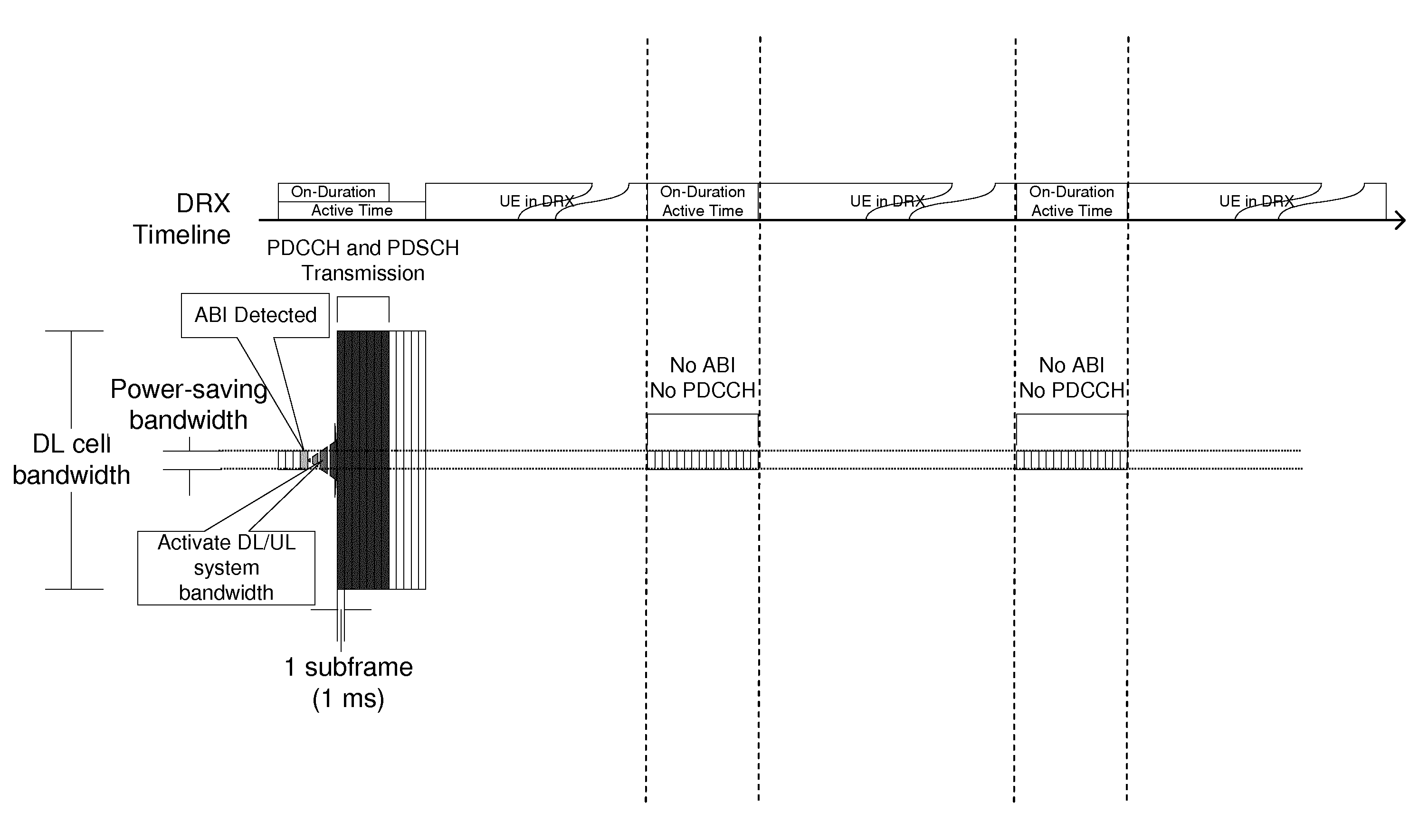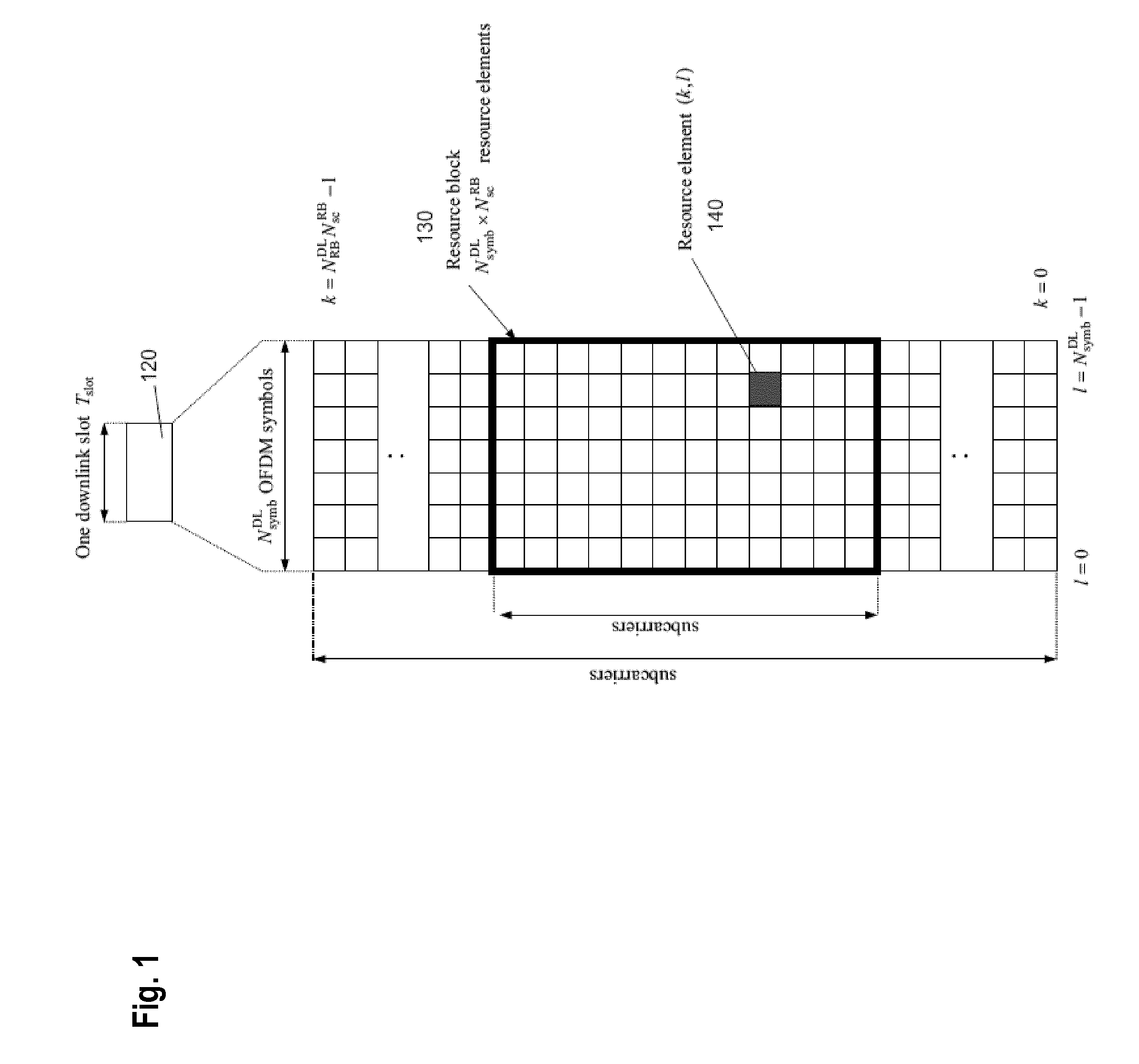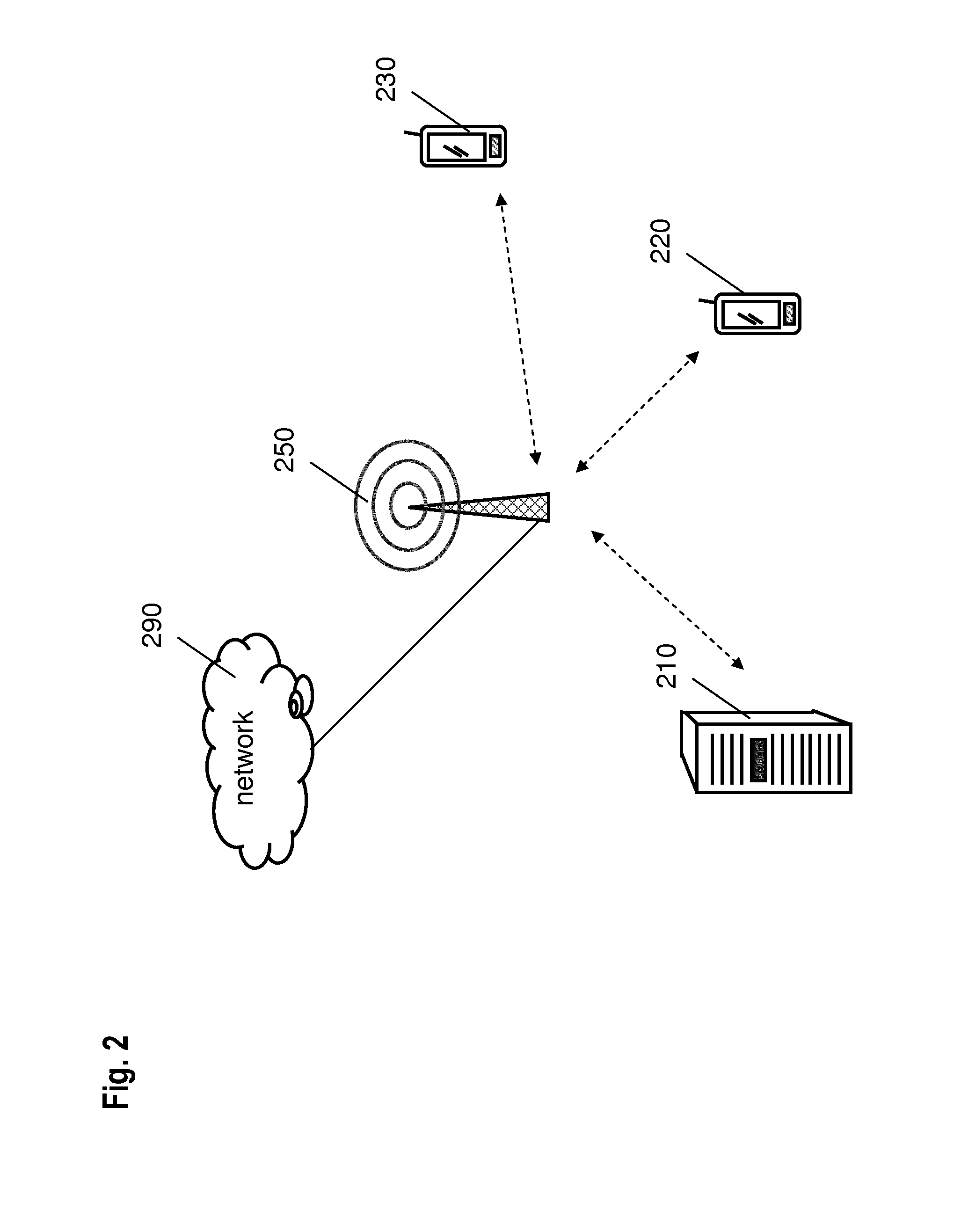Active bandwidth indicator for power-saving ues
a technology of power-saving terminals and active bandwidth indicators, applied in power management, high-level techniques, instruments, etc., can solve the problems of less flexibility, transmission errors, and slightly slower switching, and achieve the effects of reducing power consumption, simplifying the handling job of enodeb, and energy-saving operation
- Summary
- Abstract
- Description
- Claims
- Application Information
AI Technical Summary
Benefits of technology
Problems solved by technology
Method used
Image
Examples
Embodiment Construction
[0110]The invention is related to increasing the power-consumption efficiency of communication terminals. In particular, the present invention is well-suited for mobile communication devices such as mobile phones and / or so-called machine-type communication devices that are not physically (manually) operated by an end-user, but rather used, for instance, to monitor sensor data. The machine-type communication devices typically only occasionally transmit or receive their data. For such devices, a long battery life is particularly relevant, because they are widely operated in remote locations or in locations where regular maintenance by human personnel is not economically or otherwise feasible.
[0111]The following paragraphs will describe various embodiments of the present invention. For exemplary purposes only, most of the embodiments are outlined in relation to an OFDM downlink radio access scheme according to 3GPP LTE (Release 8) and LTE-A (Release 10 or 11) mobile communication syste...
PUM
 Login to View More
Login to View More Abstract
Description
Claims
Application Information
 Login to View More
Login to View More - R&D
- Intellectual Property
- Life Sciences
- Materials
- Tech Scout
- Unparalleled Data Quality
- Higher Quality Content
- 60% Fewer Hallucinations
Browse by: Latest US Patents, China's latest patents, Technical Efficacy Thesaurus, Application Domain, Technology Topic, Popular Technical Reports.
© 2025 PatSnap. All rights reserved.Legal|Privacy policy|Modern Slavery Act Transparency Statement|Sitemap|About US| Contact US: help@patsnap.com



